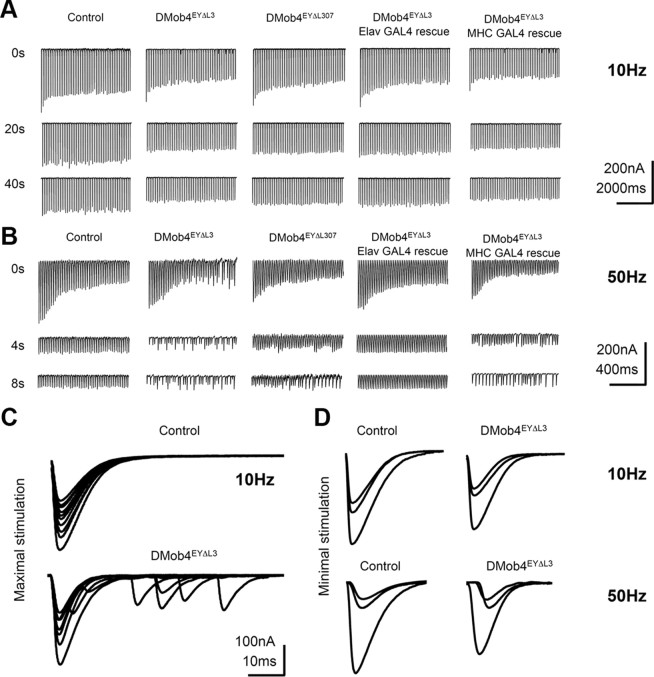Figure 6.
Electrophysiological analysis of DMob4 mutants. A–D, Voltage-clamp recordings at the NMJ of third-instar larvae. EPSCs were elicited at 10 Hz (A) or 50 Hz (B) stimulation from control, DMob4 (null and hypomorphic), and rescued (neural- and muscle-specific expression) animals. The EPSC traces represent responses to continuous tetanizing stimulus trains. To compress traces, short blocks of stimuli at different time points (as indicated) from a continuous stimulus train are presented. DMob4EYΔL3 and DMob4EYΔL307 mutants exhibit failures in EPSCs at 50 Hz stimulation after 4 s of sustained excitation of peripheral nerves. C, Overlaid EPSC responses from single stimuli at progressive time points in a 10 Hz stimulus train using a maximal (2× threshold) stimulation intensity. DMob4 mutants exhibit supernumerary responses late in a stimulus train. D, Overlaid EPSCs evoked at 10 and 50 Hz. DMob4 mutants exhibit a slight reduction in EPSC amplitude at 10 and 50 Hz stimulation and a delay (rightward shift) in EPSC response at 50 Hz.

